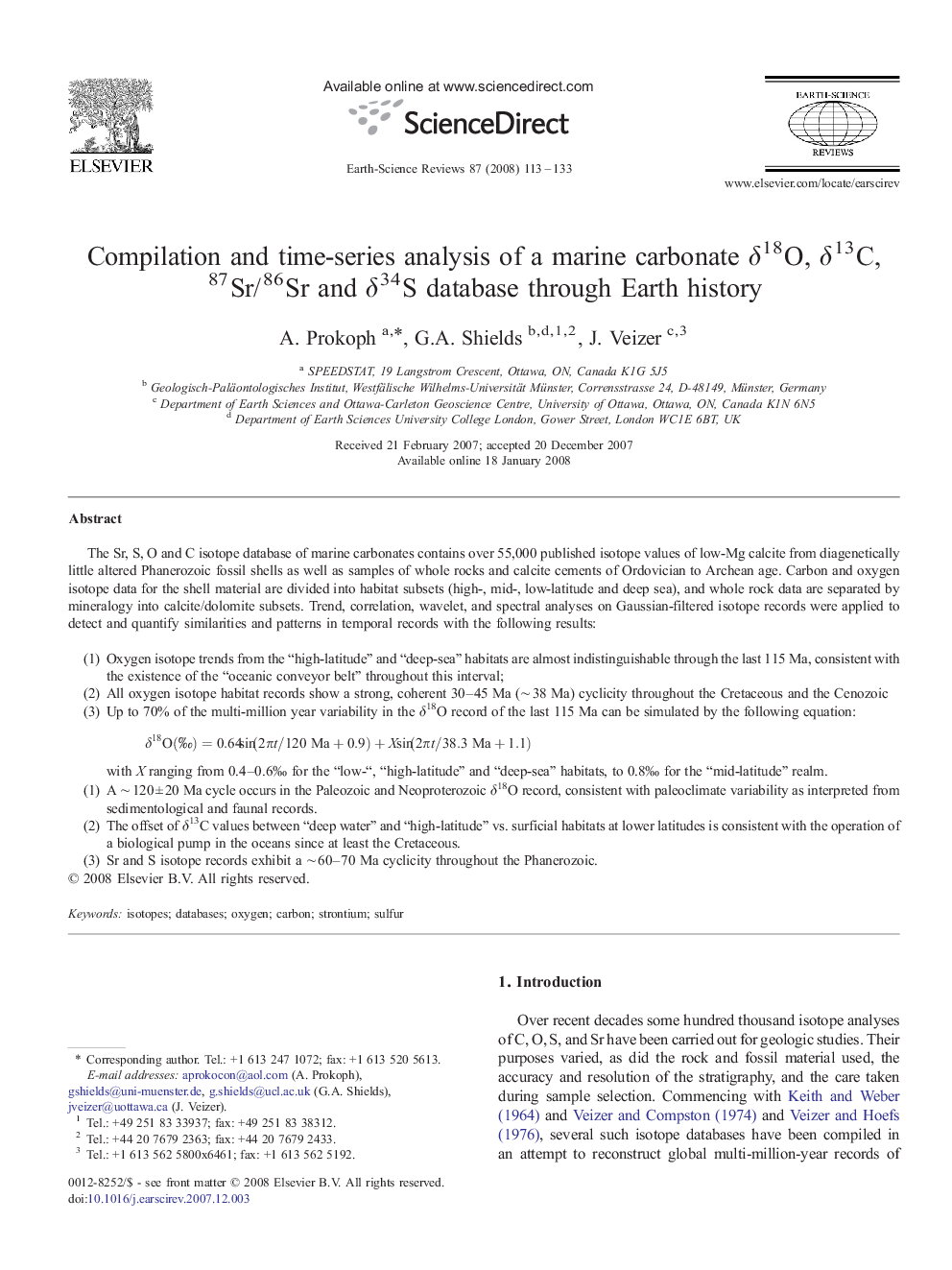| Article ID | Journal | Published Year | Pages | File Type |
|---|---|---|---|---|
| 4726408 | Earth-Science Reviews | 2008 | 21 Pages |
The Sr, S, O and C isotope database of marine carbonates contains over 55,000 published isotope values of low-Mg calcite from diagenetically little altered Phanerozoic fossil shells as well as samples of whole rocks and calcite cements of Ordovician to Archean age. Carbon and oxygen isotope data for the shell material are divided into habitat subsets (high-, mid-, low-latitude and deep sea), and whole rock data are separated by mineralogy into calcite/dolomite subsets. Trend, correlation, wavelet, and spectral analyses on Gaussian-filtered isotope records were applied to detect and quantify similarities and patterns in temporal records with the following results:(1)Oxygen isotope trends from the “high-latitude” and “deep-sea” habitats are almost indistinguishable through the last 115 Ma, consistent with the existence of the “oceanic conveyor belt” throughout this interval;(2)All oxygen isotope habitat records show a strong, coherent 30–45 Ma (∼ 38 Ma) cyclicity throughout the Cretaceous and the Cenozoic(3)Up to 70% of the multi-million year variability in the δ18O record of the last 115 Ma can be simulated by the following equation:δ18O(‰)=0.64sin(2πt/120Ma+0.9)+Xsin(2πt/38.3Ma+1.1)with X ranging from 0.4–0.6‰ for the “low-“, “high-latitude” and “deep-sea” habitats, to 0.8‰ for the “mid-latitude” realm.(1)A ∼ 120 ± 20 Ma cycle occurs in the Paleozoic and Neoproterozoic δ18O record, consistent with paleoclimate variability as interpreted from sedimentological and faunal records.(2)The offset of δ13C values between “deep water” and “high-latitude” vs. surficial habitats at lower latitudes is consistent with the operation of a biological pump in the oceans since at least the Cretaceous.(3)Sr and S isotope records exhibit a ∼ 60–70 Ma cyclicity throughout the Phanerozoic.
